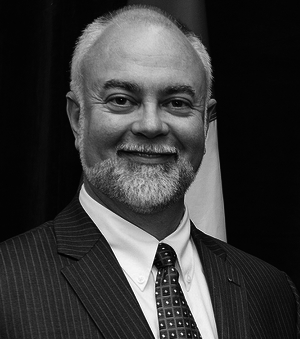On April 17, 1982, the day after my last exam in first-year law school, I pedalled my bicycle across town on a sunny Vancouver day to have breakfast at a friend's, and to watch his television as our Constitution was brought to Canada from England on a rainy day in Ottawa. Along with the British North America Act crossing the pond — and being renamed the Constitution Act, 1867 — the entire Canadian legal system was amended through the made-in-Canada Constitution Act, 1982. Key to this Canadianized component was the Canadian Charter of Rights and Freedoms, often referred to simply as the Charter.
The Charter applies between government and government agencies — federal, provincial, municipal, school boards, etc. — and the citizenry. It does not apply between private persons. Human rights codes, acts and bills of rights are constitution-like legislation (quasi-constitutional) that apply to the relationship between non-governmental parties as well as between government and citizens within the provincial or federal jurisdiction of the particular code.
In addition to a preamble recognizing the foundation of this nation "upon principles that recognize the supremacy of God and the rule of law," the Charter comprises a series of brief statements negotiated by committee with the intention of summarizing the recognized rights and freedoms of the Canadian people after 115 years of Canada.
The first freedoms mentioned in the Charter are "fundamental." One would think this to be a reference to the essential, primary and underlying freedoms of the nation as a free and democratic society. However, the Supreme Court of Canada has determined that there is, at least theoretically, no hierarchy of rights.
The first freedom listed is "freedom of conscience and religion." Freedom of religion has been recognized by Brian Grim and Roger Finke, in their book The Price of Freedom Denied, as the "canary in the coal mine" freedom or, to use another word, "fundamental" to any free society.
In 2005, Canada was listed for the first time by The Voice of the Martyrs Canada as a nation displaying early signs of a general, government accepted persecution of Christians. The early signs are efforts to i) stereotype, ii) vilify and iii) marginalize Christians simply because of their faith. (The two remaining stages are iv) criminalizing the target group and/or its works and v) outright, open persecution.)
This display of early signs of persecution of Christians is partly due to the Supreme Court's application of section 1 of the Charter:
"The Canadian Charter of Rights and Freedoms guarantees the rights and freedoms set out in it subject only to such reasonable limits prescribed by law as can be demonstrably justified in a free and democratic society."
No right is absolute. The Supreme Court of Canada has settled on an, again theoretically, objective test (known as the Oakes test) for assessing whether or not laws and regulations established by various levels of government and government authorized bodies are constitutionally acceptable "reasonable limits." To be reasonable:
1. There must be a pressing and substantial objective 2. The means must be proportional
a. The means must be rationally connected to the objective
b. There must be minimal impairment of rights
c. There must be proportionality between the infringement and objective
Section 1 analysis of the violation of freedom of religion has set components of the Canadian public and the Canadian legal system at odds with one another.
In addition, the Supreme Court of Canada has interpreted section 15 of the Charter, which provides for equal protection and equal benefit under the law, as providing rights for analogous categories of rights to those listed in the Charter. Perhaps the most contentious recognition has been to an analogous right of "sexual orientation," which has set up a competing right with certain religious beliefs and practices. The interpretation of section 15 in this way arises from the drafters' use of the words "in particular" before listing the categories of non-discrimination, a choice of words the Court determined referred to examples of an open list rather than statement of a closed list.
In short, the Supreme Court of Canada has described the Constitution as a "living tree" that changes with the times, rejecting the concept that the Charter is a record of the foundational democratic freedoms established in the first 115 years of the Canadian legal system.
The first case to reach the Supreme Court of Canada on the constitutional right to freedom of religion was not a personal claim based on religion but a commercial claim based on the desire to open a drugstore on Sundays, which, three decades ago, was a violation of federal law.
In Big M Drug Mart Ltd. (1985), the Court set out a robust definition of religious freedom that mirrored the wording in Article 18 of the Universal Declaration of Human Rights: the right to freedom of thought, conscience and religion, which includes the right to share one's beliefs openly with others, the right to worship, to practice by living life according to one's beliefs, as well as to teach and disseminate one's beliefs. This was a bold definition that echoed the historic development of religious freedoms in Canada.
As the Court continued, however, it placed restrictions on freedom of religion based on terms that have proven to be uncertain in law: injury or harm to one's neighbours or their parallel or competing rights.
And the Court introduced the concept that religious freedom includes the right to be free from religion or government action that gives the appearance of religious imposition. The centuries-old concept of government and religion working cooperatively together was supplanted with something akin to a Canadianized version of the American doctrine of the separation of Church and State. Notwithstanding, the Court left our Constitutional monarchy intact even though the Queen is also the head of the Anglican Church.
The Sunday closing law, unsuitably named the Lord's Day Act, was struck from the books. A year later, in Edwards Books and Art Ltd., the Court affirmed that religion has both individual and collective aspects. The judges also noted that laws impacting religion could be made by any level of government, based on the Constitutional division of powers; and a law perceived to have a religious purpose would be found unconstitutional.
In 1991, the Court affirmed the right to privileged communication between clergy and parishioners in R. v. Gruenke, using a four-part test focused on the expectation of confidentiality in a societally recognized confidential relationship. And then it undid the privilege based on the State's need for evidence to secure a conviction in a murder trial.
There were also three friendly decisions of the Supreme Court that refined the constitutional position on faith practices associated with sincerely held religious beliefs. In Amselem (2004) and Multani (2006), the Court found that neither it nor government should be the arbiter of religious beliefs or of the diversity of safe practices associated with those beliefs. The Court also determined that other State decision makers had to make their decisions in the context of the Charter's guarantees.
Both of these decisions applied to the individual what the Court had previously decided for a community of believers in the earlier case of Trinity Western University v. B.C. College of Teachers (2001).
In that case, the Court endorsed the concept that "the diversity of Canadian society is partly reflected in the multiple religious organizations that mark the societal landscape and this diversity of views should be respected." The school could teach "education" and the graduates could teach in the public school system.
Most often quoted by opponents in the current debate around Trinity establishing a law school is one line from the decision: "The freedom to hold beliefs is broader than the freedom to act on them."
Let's look at that line in context:
"Instead, the proper place to draw the line in cases like the one at bar is generally between belief and conduct. 'The freedom to hold beliefs is broader than the freedom to act on them.' Absent concrete evidence that training teachers at TWU fosters discrimination in the public schools of B.C., the freedom of individuals to adhere to certain religious beliefs while at TWU should be respected. The BCCT, rightfully, does not require public universities with teacher education programs to screen out applicants who hold sexist, racist or homophobic beliefs. For better or for worse, tolerance of divergent beliefs is a hallmark of a democratic society."
Education is about meeting educational standards. Professional practice is about meeting standards of the profession. Context is important.
This is virtually identical to the current controversy surrounding TWU's proposal to develop a law school (to accompany its teachers' school, nursing school and school of business). Law societies and provincial ministries of education have established educational requirements for law schools. TWU has demonstrated its capacity to comply with these requirements. Provincial law societies then regulate the practice of the profession by law school graduates.
Like teaching associations, law societies receive authority to regulate legal practice from the same provincial governments that authorize law schools to provide education in preparation to practice. As government-authorized regulators, law societies have to meet human rights and Charter requirements in their operation (i.e., not behaving in a discriminatory manner).
The checkerboard of law society decisions to accept or not accept law grads from TWU demonstrates which law societies understand their responsibilities and which have decided the current air of politically acceptable "persecution" of a private Christian university is acceptable.
In British Columbia, a group of lawyers was so upset that the board of directors (called benchers) of their law society had approved TWU law grads that they instigated a non-binding members' vote. With a little over one third of members caring enough to attend a special meeting, three quarters of those present voted to have the benchers review their decision.
That had little to do with law and much to do with political sentiment, as had decisions to ban TWU law grads in Ontario and Nova Scotia. The supposed defenders of constitutionally guaranteed diversity voted to impose conformity of belief, declaring lawyers should no longer be free to practice regardless of diverse beliefs, rather than abide by the existing legal requirement of conformity to standards of practice. In doing so, they encourage action to stereotype, vilify and marginalize a specific and identified religious community based on their beliefs on a single point of opinion about which both the Supreme Court of Canada (in Reference re Same-Sex Marriage, 2004) and Parliament (in the Civil Marriage Act, 2005) have said diversity of opinion is to be respected.
As recently as 2009, the Court affirmed the principles in Trinity Western and Amselem in its decision in Alberta v. Hutterian Brethren. However, in that case, Chief Justice McLachlin and the majority also took a new departure in regard to freedom of religion.
While recognizing that the individual would be deprived by the law in question because of their religious beliefs, the Court concluded that the community could bear the additional costs imposed. In effect, the duty to accommodate was shifted from the State to the religious believer and religious community. This opens the door to put pressure on individuals and communities to change their non-harmful religious beliefs and practices based on a burden imposed by the State through law or regulation, rather than protecting them from such a burden.
The decision in Chamberlain (2002) resurrected the Charter's preamble after many had buried its reference to the supremacy of God. The Court defined the concept of a secular society as one that embraces the religious people in its midst in all aspects of life, including the public square, concluding that "everyone has 'belief ' or 'faith' in something, be it atheistic, agnostic or religious."
Some object to any influence being given these words written in dissent by the late Justice Gonthier. However, the Chief Justice, in her decision on behalf of the majority, noted agreement with him on this and other points. In the end, the Court sent the decision back to the school board, with strong language encouraging the board's final decision to hear the religious objections of the majority but to be inclusive of the position of the LGBTQ minority.
In 2013's Whatcott decision, the Court offered constitutional protection to sacred texts such as the Bible, affirmed that religious principles are welcome in the public square, and set aside the allegation that speech that hurt someone's feelings would be considered "hate speech."
Again, however, the Court noted the importance of context. The contexts in which the Scriptures are used and in which religious principles are expressed were noted as important determinants of the appropriateness of what is being expressed. The Court stated that if the context of the communication could be reasonably perceived as targeting an identifiable group, the content might be considered hate speech.
The Court offered a strange "no decision" ruling in the S.L. case in 2012. It affirmed the State's role in setting educational requirements as well as the right of parents to raise their children in their own religion. However, the Court essentially disqualified the case because the parents had not demonstrated that the proposed education program to which they objected had actually caused any harm to their children. This was a departure from long-endorsed concepts of "prevention of harm" or "potential for injury."
The court did acknowledge that the State is not capable of being fully neutral and declared that the State should neither favour nor hinder any particular religious belief. The justices also remarked that this non-decision did not favour the government's position. And, thus, the issues were essentially presented before the Court again in March 2014 in the Loyola case.
This is just a sampling of one branch of the Canadian legal system's treatment of "freedom of religion." There are others: the treatment of public schoolteachers who advocated religious principles on public policy matters; marriage commissioners who were removed from their positions because of their religious beliefs about marriage; municipalities' efforts to zone out religious presence; or human rights tribunal decisions that have required faith communities to change practices connected with their sincerely held religious beliefs or that arrived at the finding that a song called "Kill All The Christians" was not hateful.
If there is indeed no hierarchy of rights, then freedom of religion is in second place when it should be tied for first with all other rights recognized under the Charter. Human rights in Canada have been mistakenly applied to protect perceived minorities rather than to support all Canadians.
Is the Canadian legal system a friend or foe of religious freedom? I'd say it's more like Dr. Jekyll and Mr. Hyde.






